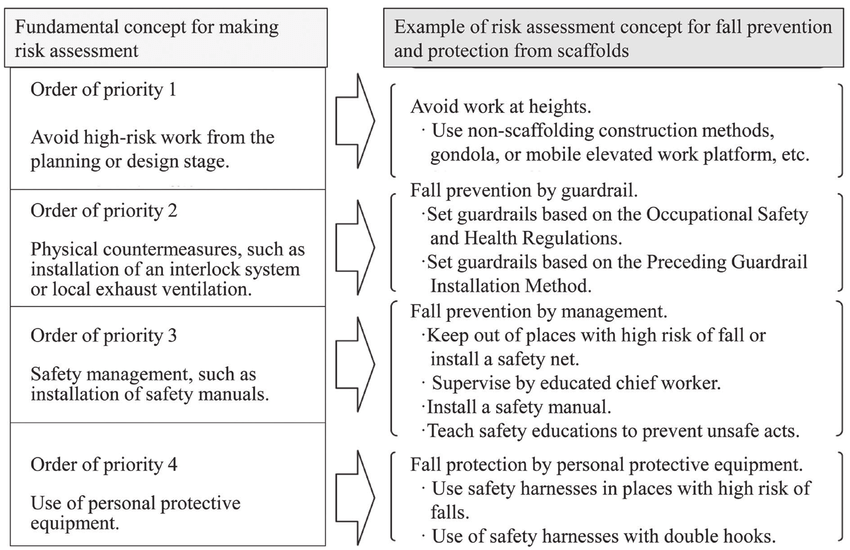Dementia Fall Risk for Dummies
Table of ContentsThe Greatest Guide To Dementia Fall RiskSome Known Facts About Dementia Fall Risk.Rumored Buzz on Dementia Fall RiskSome Ideas on Dementia Fall Risk You Need To Know
A fall danger evaluation checks to see just how most likely it is that you will fall. The analysis generally consists of: This includes a series of concerns concerning your overall health and if you have actually had previous drops or troubles with equilibrium, standing, and/or walking.Interventions are suggestions that might minimize your danger of falling. STEADI consists of three steps: you for your danger of falling for your threat factors that can be enhanced to try to avoid drops (for example, equilibrium troubles, impaired vision) to lower your threat of dropping by using efficient techniques (for instance, giving education and sources), you may be asked several questions including: Have you fallen in the previous year? Are you stressed about dropping?
After that you'll take a seat again. Your company will check how much time it takes you to do this. If it takes you 12 seconds or more, it might mean you are at higher danger for an autumn. This examination checks strength and balance. You'll being in a chair with your arms crossed over your breast.
The settings will certainly obtain more difficult as you go. Stand with your feet side-by-side. Relocate one foot midway forward, so the instep is touching the huge toe of your various other foot. Move one foot totally before the various other, so the toes are touching the heel of your various other foot.
The Of Dementia Fall Risk
Many drops occur as an outcome of several contributing factors; consequently, handling the danger of dropping starts with recognizing the factors that add to drop danger - Dementia Fall Risk. Several of the most relevant threat factors consist of: Background of prior fallsChronic clinical conditionsAcute illnessImpaired stride and equilibrium, lower extremity weaknessCognitive impairmentChanges in visionCertain high-risk drugs and polypharmacyEnvironmental elements can also increase the risk for drops, including: Insufficient lightingUneven or harmed flooringWet or unsafe floorsMissing or harmed hand rails and order barsDamaged or improperly equipped devices, such as beds, wheelchairs, or walkersImproper use assistive devicesInadequate supervision of individuals residing in the NF, consisting of those that display hostile behaviorsA successful autumn risk management program requires an extensive scientific assessment, with input from all participants of the interdisciplinary group

The treatment plan must also consist of interventions that are system-based, such as those that promote a safe setting (proper illumination, handrails, get hold of bars, etc). The efficiency of the interventions ought to be examined regularly, and the care strategy changed as required to mirror changes in the fall risk evaluation. Implementing an autumn risk administration system utilizing evidence-based finest technique can reduce the occurrence of visit the website falls in the NF, while limiting the possibility for fall-related injuries.
Examine This Report about Dementia Fall Risk
The AGS/BGS guideline suggests evaluating all grownups aged 65 years and older for fall threat annually. This testing consists of asking clients whether they have fallen 2 or more times in the previous year or sought clinical interest for a loss, or, if they have actually not fallen, whether they feel unsteady when walking.
Individuals who have dropped as soon as without injury ought to have their equilibrium and stride evaluated; those with gait or balance abnormalities should get added evaluation. A background of 1 fall without injury and without stride or balance issues does not call for further assessment past ongoing yearly loss threat testing. Dementia Fall Risk. A fall danger analysis is required as component of the Welcome to Medicare evaluation

Some Known Details About Dementia Fall Risk
Documenting a drops history is one of the high quality signs for fall avoidance and administration. An essential part of danger evaluation is a medicine review. Several courses of medicines raise loss danger (Table 2). Psychoactive drugs specifically are independent predictors of drops. These medications often tend to be sedating, change the sensorium, and hinder equilibrium and gait.
Postural hypotension can commonly be alleviated by lowering the dosage of blood pressurelowering medicines and/or stopping medicines that have orthostatic hypotension as a side impact. Use above-the-knee support tube and copulating the head of the bed raised may additionally minimize postural reductions in high blood pressure. The suggested elements of a fall-focused physical assessment are displayed in Box 1.

A pull time higher than or equal to 12 secs suggests high loss threat. The 30-Second Chair Stand examination examines lower extremity toughness and equilibrium. Being unable to stand from a chair of knee height without making use of one's arms indicates boosted autumn threat. The 4-Stage Balance test analyzes static you could check here balance by having the patient stand in 4 placements, each gradually more challenging.